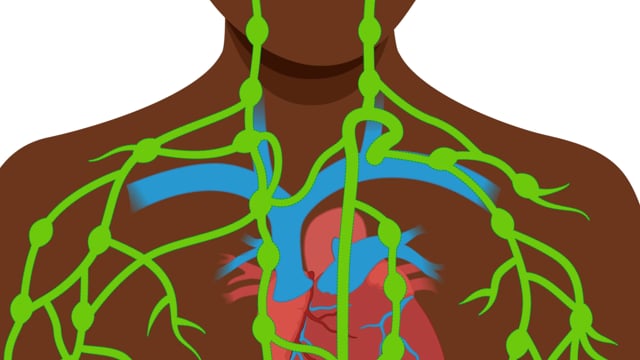- Parents Home
- Para Padres
- A to Z Dictionary
- Allergy Center
- Asthma
- Cancer
- Diabetes
- Diseases & Conditions
- Doctors & Hospitals
- Emotions & Behavior
- First Aid & Safety
- Flu (Influenza)
- Food Allergies
- General Health
- Growth & Development
- Heart Health & Conditions
- Homework Help Center
- Infections
- Newborn Care
- Nutrition & Fitness
- Play & Learn
- Pregnancy Center
- Preventing Premature Birth
- Q&A
- School & Family Life
- Sports Medicine
- Teens Home
- Para Adolescentes
- Asthma
- Be Your Best Self
- Body & Skin Care
- Cancer
- Diabetes
- Diseases & Conditions
- Drugs & Alcohol
- Flu (Influenza)
- Homework Help
- Infections
- Managing Your Weight
- Medical Care 101
- Mental Health
- Nutrition & Fitness
- Q&A
- Safety & First Aid
- School, Jobs, & Friends
- Sexual Health
- Sports Medicine
- Stress & Coping
The Lymphatic System
What Is the Lymphatic System?
The lymphatic system is part of the immune system. It keeps body fluid levels in balance and defends the body against infections. Lymphatic (lim-FAT-ik) vessels, tissues, organs, and glands work together to drain a watery fluid called lymph from throughout the body.
What Does the Lymphatic System Do?
One of the lymphatic system's major jobs is to drain extra (LIMF) fluid from body tissues and return it to the blood. Lymph contains white blood cells called lymphocytes (LIM-fuh-sites) and chyle (KYE-ul), which is made of fats and proteins from the intestines.
This is important because water, proteins, and other substances are always leaking out of tiny blood capillaries into the body tissues around them. If the lymphatic system didn't drain it, this extra fluid would build up in the tissues and make them swell.

How the Lymphatic System Works
The lymphatic system has some important jobs, like helping the body fight infection. See how it works in this quick animation.
What's in the Lymphatic System?
Organs and tissues that are part of the lymphatic system include:
- bone marrow, the thick, spongy kind of jelly inside bones that makes many kinds of blood cells, including immune system cells
- thymus gland, which makes immune system cells called T cells, especially before and during puberty
- tonsils
- appendix
- lymph nodes
Lymph nodes are small clumps of tissue along the network of that clean lymph as it moves through them. They filter out viruses, bacteria, and fungi that can cause illnesses.
Most lymph nodes are in clusters in the neck, armpit, and groin area. They're also found along the lymphatic pathways in the chest, abdomen, and pelvis, where they filter blood. Inside the lymph nodes, T-cells and another type of lymphocyte, B-cells, help the body fight infection. B cells make antibodies — special proteins that stop infections from spreading by trapping disease-causing germs and destroying them.
When someone has an infection, germs collect in the lymph nodes. If their throat is infected, for example, the lymph nodes in the neck may swell. That's why doctors check for swollen lymph nodes (sometimes called swollen "glands") in the neck when someone has a sore throat. When lymphatic nodes swell, it's called lymphadenopathy (lim-fad-n-OP-uh-thee).
Lymphatic vessels, or tubes, are the pathways that carry lymph. The major lymphatic vessels are:
- The thoracic duct: It begins near the lower part of the spine and collects lymph from the pelvis, abdomen, and lower chest. The thoracic (thuh-RA-sik) duct runs up through the chest and empties into the blood through a large vein near the left side of the neck.
- The right lymphatic duct: It collects lymph from the right side of the neck, chest, and arm, and empties into a large vein near the right side of the neck.

© 1995- The Nemours Foundation. KidsHealth® is a registered trademark of The Nemours Foundation. All rights reserved.
Images sourced by The Nemours Foundation and Getty Images.
